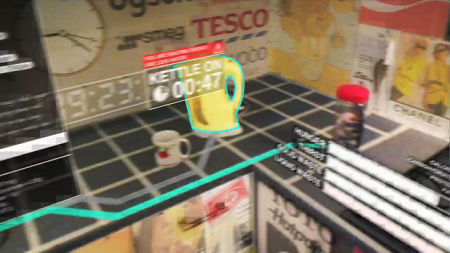One could argue that coining a new word for what I’ve been describing is redundant, when we already have the perfectly good phrase “augmented reality”. But we’re not really talking about something like Layar, which provides a limited kind of augmented reality through your cell phone screen. We’d need to add some more words and phrases to “augmented reality” to give the whole story — like “social”, “unobtrusive”, “phoneless”, and “eye-relative”. We could, for example, say we’re discussing a Social Unobtrusive Phoneless Eye-Relative Augmented Reality. In other words, SUPER-AR!
Hmm. Maybe that sounds a little pompous. OK, for now I’m just going to stick with “eccescopy”. 🙂
Before delving too much more into the nuts and bolts of the underlying technology, it might be useful to think a bit about possible unexpected outcomes of having seamless augmented reality in our daily lives. Or in other words, “be careful what you wish for”.
Think back to that distant time before the advent of cell phones, if you can. Hard as it is to believe, nobody missed them. If you wanted to meet someone, you made a plan and you stuck to it. Now, of course, such a world seems inconceivable. After all, what happens if your plans change suddenly? As it turns out, the causality in the previous sentence actually goes both ways: Often your plans change suddenly because you have a cell phone. Or more precisely, plans change suddenly because you know it won’t be a social disaster to suddenly change your plans.
Looking around the web, I find far more thought given to these issues by designers than by technologists — which is not all that surprising. For example, this video presents a delightfully dystopian vision by Keiichi Matsuda of what might really happen if you got into the habit of relying on your computer for everything — even something as simple as preparing a cup of tea:

Granted I’m a gadgets-loving Japanese, but I want that kitchen! 🙂
In Ocean 13, like this “Casino Win” scene, can’t Las Vegas casinos already monitor their clients’ wins like this? (around 1’52” mark)
http://www.youtube.com/watch?v=711i0u-HN3A